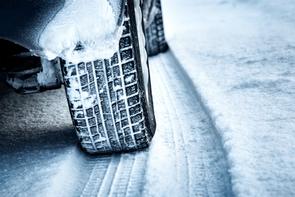Top Tips to Get Your Car Winter Ready

The long, bright, dry days of summer are well behind us with the damp, dark and cold conditions of winter ahead. That might sound a bit miserable, but the last thing anyone needs on top of that is to be stranded with a broken-down car. There are ways, though, to minimise the risk of your car letting you down this winter, so here are our top tips for getting winter ready.
Get your car serviced
This is year-round advice, but it’s important to make sure your car is, overall, in good condition and has been checked over by a qualified mechanic. Winter already throws enough at cars, so if your car is overdue a service, it’s a good idea to book it in for a check-up before the worst of the weather arrives.
Check your battery
If your car fails to start on a frosty morning, the chances are that it’s due to a flat battery. Winter places a lot of strain on batteries because of both the cold and the extra demand from lighting and heater fans; if it’s struggling to start the car in the morning, it could be a sign that it’s on the way out. If so, it’s a good idea to invest in a new battery. Batteries usually cost between €70 and €160 and should give around five years’ service. Most retailers will fit a new battery for a small additional fee.
Check your fluids

Again, this is more year-round advice, but it’s especially critical in the winter. Be sure to check your coolant, oil and screen-wash regularly. Coolant (also referred to as anti-freeze) is particularly important in the winter because it stops the water in your car’s cooling system from freezing. Topping up your screen wash helps keep the windscreen clear of the grime and mud thrown up from dirty roads. If, as part of your regular round of checks, you notice that the oil level on your dipstick is low, you should top that up to the correct level too. If you’re not able for any of these, a garage or retailer will be able to carry out these checks either for free or for a small fee.
When topping up, make sure that the approved quality graded oil is used. Wrong oil in an engine can invalidate any warranty. If in doubt, contact your local dealer.
Make sure your tyres are in good shape
Most Irish drivers don’t opt for winter tyres, which only make sense when the road temperature is below seven degrees Celsius – that’s less often than you might think. As such, when driving in cold, frosty or rainy conditions, the best we can do is check that our tyres are in good condition with a tread depth well above the 1.6mm minimum, even wear, the correct air pressure and no damage to sidewalls. Tyres are our cars’ only point of contact with the road and tread and condition are vitally important when it comes to stopping and cornering in less-than-ideal conditions.
Check your wipers
If you notice that the rubber on your wipers is cracked or split, if there’s excessive squeaking or if the wipers aren’t performing adequately, either swap them for a new set or get your mechanic or motor factor to do it for you.
Test your lights
.jpg)
Visibility is all-important in the darker months, so be sure to regularly check that all your bulbs are working as they should be. You can do a walk-around check yourself or get someone to help. Some bulbs can be particularly difficult to replace, so it can be definitely worthwhile getting a mechanic or retailer to do it for you. Keep the lights clean, too.
Run your air conditioning
This might sound mad in the winter, but air conditioning is as essential in the cold, wet months as it is in the summer. Air conditioners essentially act as a dehumidifier and can remove moisture from the car’s interior helping to demist windows a lot more quickly that by just using the fan. It’s especially useful in rainy conditions or when clearing the windscreen on a frosty morning.
Drive your car
With so many people still working from home, a lot of cars aren’t being driven as much as they were. Cars don’t really like sitting idle for long, especially not in the wet winter months where the battery can deplete and the weather can cause a build-up of dampness and mould in the interior that may also lead to moisture-sodden, malfunctioning electrics. If you don’t need to drive your car much, it’s worth taking it for a good 30-minute spin once or twice a week to warm up the engine, charge the battery, dry out the interior, keep the brakes in good order and evaporate any moisture that may have accumulated in the exhaust system.
Keep a winter driving kit
.jpg)
There are a few essential winter tools that every driver should keep close by in the winter in the event of an emergency.
- An ice-scraper or de-icing spray
- Extra bulbs
- Small bottles of coolant and screen wash
- A mobile phone and charger
- A high-vis vest
- A warning triangle
- A torch
- A towrope
If you need to drive in particularly bad weather, it may also be advisable to make sure you bring warm clothes, waterproof boots and some food and drink, preferably including a thermos flask of tea or coffee to keep you warm if you get stranded.
Drive safely
Driving conditions are a lot more challenging in the winter with rain, frost, sleet and snow. As such, it pays to keep especially alert and to reduce your speed to cope with greater stopping distances and decreased visibility. This, plus our advice on how to get your car winter-ready, should help get you through the cold months safely and reliably.
Carzone - 17-Nov-2022


